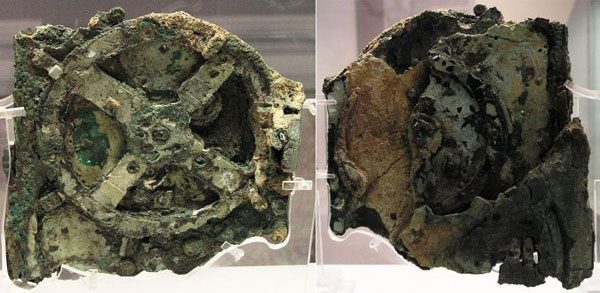History is filled with countless mysteries about lost civilizations and the advanced technologies they possessed. To this day, many believe that some ancient civilizations had scientific and technological capabilities that far exceeded our current understanding.
Ancient technology has always been a fascinating subject. The discovery of the Antikythera Mechanism is akin to finding the key to a treasure trove of ancient technology. Its existence has overturned our perceptions of past civilizations. This device is not just a complex machine but also an ancient computer capable of predicting astronomical positions, tracking solar and lunar eclipses, and even recording the cycles of the Olympic Games.
Its emergence has made people realize that the development of human science and technology does not always move forward. Instead, it can fluctuate over time, suggesting that the technology we have lost may be more advanced than what we currently possess.
Modern technology has advanced to such a degree that contemporary people mistakenly believe we are far more advanced than our ancestors. We often assume that ancient people lived primitive lives, but with the ongoing advancements in archaeology, we are gradually coming to understand that this perspective may not align with reality.
>>> Survey of the ship containing the world’s oldest computer
>>> How the Greeks calculated in 100 BC
According to Fox News, the Antikythera Mechanism, which dates back to ancient times, is considered the world’s first “computer,” recovered from a sunken ship off the coast of Greece in 1901. It demonstrates the masterful scientific and technical prowess of the ancient Greeks. The Antikythera Mechanism is currently housed in the National Archaeological Museum of Athens.
Recent research by James Evans, a physics professor at the University of Puget Sound in the United States, and Professor Christian Carman at the University of Quilmes in Argentina, indicates that the device dates back to around 205 BC, which is 50 to 100 years earlier than previously calculated.

The Antikythera Mechanism was recovered from a sunken ship off the coast of Greece. (Image: Wikimedia Commons)
This device appears simple, yet the mechanisms used within it seem to have been far ahead of their time. In fact, they are more complex than any tools discovered in the last 1,000 years.

A part of Antikythera displayed at a museum in Greece. (Image: Reuters).
The materials include 30 corroded bronze gears, which have hindered scientists from gaining a comprehensive view. To clarify the workings of the device, experts at University College London utilized a 3D modeling system to solve the mystery of how it operates.
This research reveals that the first computer was a “brilliant invention.” Researchers presented detailed descriptions of the device and its operational models in a paper published in Scientific Reports.
Overall, researchers believe that the device was capable of tracking more than what people expected during that time.
“The 3D modeling revealed a genius invention, combining Babylonian astronomy, Plato’s mathematics, and ancient Greek astronomical theories,” the research team wrote in the report’s summary.
These instruments have provided scientists with unique insights into the ancient world. Recent discoveries, such as the underwater temple in Pozzuoli, also offer intriguing information about the first century BC.
However, the research has faced many challenges as only one-third of the Antikythera Mechanism has been preserved intact to this day.
Scientists also question the connection between the mechanism and the life of Archimedes, one of the leading scientists of ancient Greece, who died in 212 BC.


















































